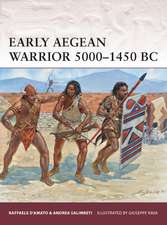The Parthenon Enigma
Autor Joan Breton Connellyen Limba Engleză Paperback – 3 noi 2014
A "New York Times" Notable Book and one of "The Daily Beast"'s Best Books of the Year
Winner of the Ralph Waldo Emerson Award
Since the Enlightenment, the Parthenon the greatest example of Athenian architecture has been venerated as the definitive symbol of Western democratic values. Here, Joan Breton Connelly challenges this conventional wisdom, drawing on previously undiscovered sources to present a revolutionary new view of this peerless building. Reaching back across time to trace the Parthenon s story from the laying of its foundation, Connelly finds its true meaning not in the rationalist ideals we typically associate with Athens but in a vast web of ceaseless cultic observances and a unique mythic identity, in which democracy in our sense of the word would have been inconceivable. Marshalling a breathtaking range of textual and visual evidence, and full of fresh insights woven into a thrilling narrative that brings the distant past to life, "The Parthenon Enigma" sheds a stunning new light on the ancient Athenians from whom we claim cultural descent and on Western civilization itself."
| Toate formatele și edițiile | Preț | Express |
|---|---|---|
| Paperback (1) | 154.42 lei 22-36 zile | |
| Vintage Publishing – 3 noi 2014 | 154.42 lei 22-36 zile | |
| Hardback (1) | 126.37 lei 22-36 zile | |
| Head of Zeus – 30 ian 2014 | 126.37 lei 22-36 zile |
Preț: 154.42 lei
Nou
29.55€ • 30.93$ • 24.45£
Carte disponibilă
Livrare economică 17-31 martie
Specificații
ISBN-10: 0307476596
Pagini: 528
Dimensiuni: 127 x 217 x 27 mm
Greutate: 0.5 kg
Editura: Vintage Publishing
Notă biografică
Descriere
For more than two millennia, the Parthenon has been revered as the symbol of Western culture, the epitome of the ancient society from which we derive our highest ideals. It was understood to honor the city-state's patron deity Athena, and its intricately sculpted surface believed to depict a celebration of civic continuity in the birthplace of democracy. But through a close reading of a lost play by Euripides, accidentally discovered on a papyrus wrapping an Egyptian mummy, Joan Connelly began to develop a new theory that has sparked one of the fiercest controversies ever to rock the world of classics. Now, she recounts how our most basic sense of the Parthenon and of the culture that built it may have been crucially mistaken. Re-creating the ancient structure from its natural environment to its pediment, and using a breathtaking range of textual and visual evidence, she uncovers a monument glorifying human sacrifice set in a world of cult rituals quite unlike anything conventionally conjured by the word "Athenian."










